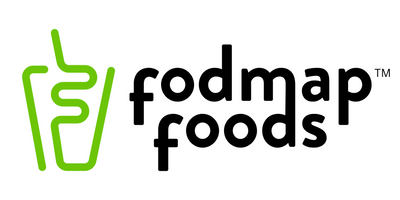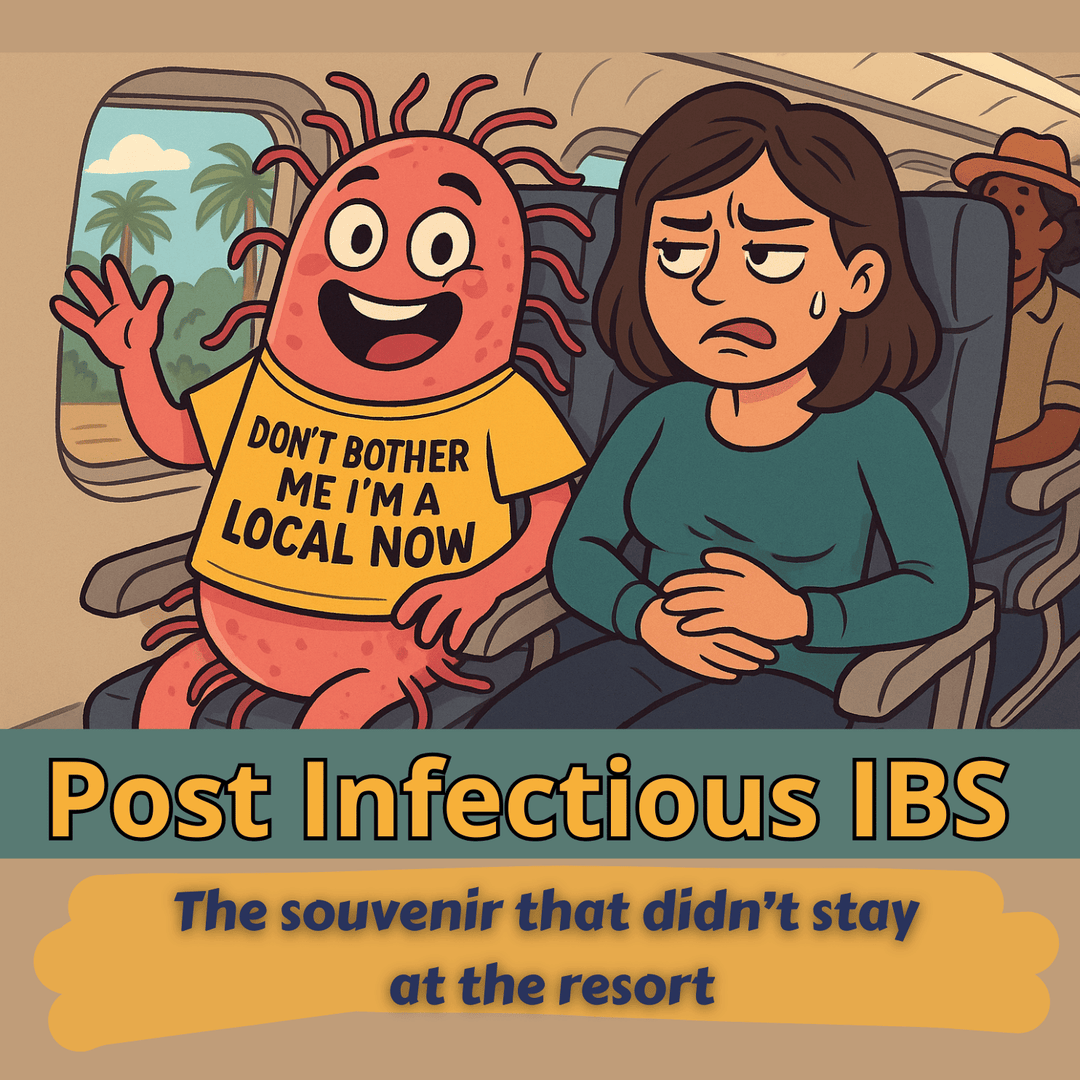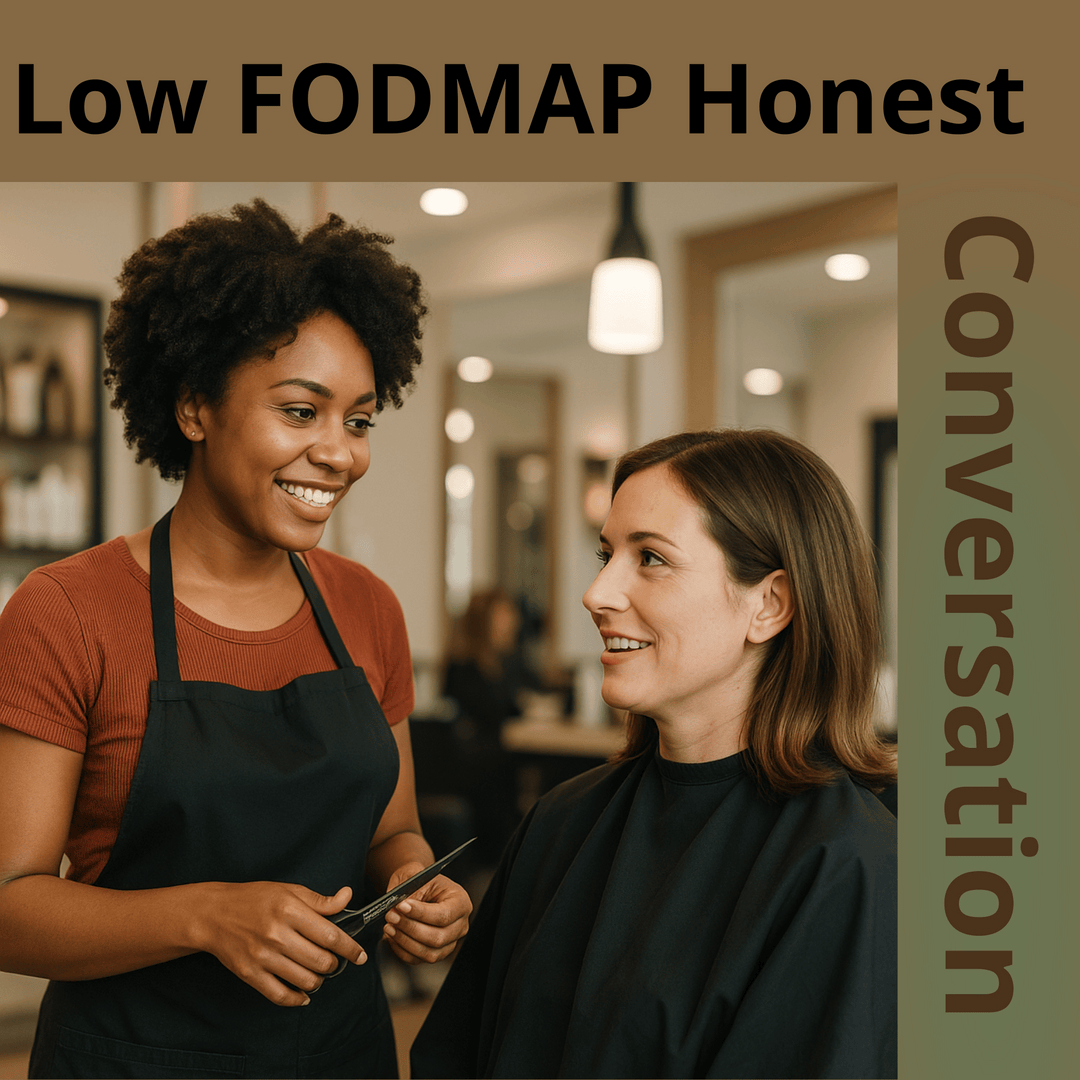Stomach flu that turns into IBS

When Your Gut Doesn’t Bounce Back: Understanding Post-Infectious IBS
You know that awful stomach bug that wipes you out for days—the one you swear you’ll never recover from? For most people, it ends there. But for some, that infection flips a switch that doesn’t turn off. Even after the vomiting and diarrhea are gone, the gut never quite goes back to normal. Meals feel unpredictable, bloating becomes the norm, and you find yourself asking, “Why am I still like this?”
That’s post-infectious irritable bowel syndrome (PI-IBS)—a form of IBS that begins after a GI infection and overstays its welcome.
The Gut Bug That Started It All
PI-IBS shows up after a stomach infection caused by bacteria like Campylobacter or Salmonella, viruses like norovirus, or parasites like Giardia. The infection clears, but the gut’s “micro-neighborhood”—the balance of bacteria, immune cells, and nerve signals—doesn’t recover gracefully.
Research shows about 10–20% of people who get food poisoning or gastroenteritis go on to develop IBS-like symptoms that last for months or even years. And women? We’re more likely to be in that unlucky percentage.
Doctors believe several things raise the risk:
-
A severe initial infection (especially one that involved fever or antibiotics)
-
Being female or younger
-
Having anxiety, depression, or a “high-alert” nervous system
-
A gut that’s already sensitive or prone to inflammation
In other words, it’s not all in your head—your gut actually changed.
What’s Going On Beneath the Surface
When an infection hits, the gut wall becomes inflamed. Normally, that inflammation fades. But sometimes the gut’s immune cells keep firing long after the infection is gone. The lining stays a little “leaky,” bacteria shift out of balance, and communication between the gut and brain becomes distorted.
That miscommunication is why you can feel pain or urgency from even normal digestion. It’s not about overreacting—it’s that your gut nerves are literally more sensitive now. Scientists call this the gut–brain axis, and in PI-IBS, it’s like the volume knob got stuck on “high.”
Diagnosing PI-IBS
There’s no single test for PI-IBS. Diagnosis relies on symptoms that fit IBS criteria—abdominal pain linked to bowel changes—plus the story of an infection that came first. If you developed IBS-type symptoms within about six months of a major stomach bug, that connection matters.
Your doctor might check labs or stool tests to rule out lingering infection, celiac disease, or inflammatory bowel disease. But if those come back clear, PI-IBS is likely.
What You Can Do
There’s no magic pill yet, but there are proven ways to take back control:
1. Nourish, don’t punish.
Start with regular meals, hydration, and the right fuel. The low-FODMAP diet—done with a dietitian, not alone—is still the gold standard for IBS relief. The goal isn’t restriction forever, but finding your personal triggers and expanding safely.
2. Soothe your system.
Over-the-counter options like peppermint oil capsules or gentle antispasmodics can reduce cramping. For diarrhea, loperamide can help. For persistent bloating or pain, low-dose antidepressants (yes, at gut-level doses) can recalibrate the gut–brain circuit.
3. Reset the microbiome.
Targeted probiotics—especially Bifidobacterium and Lactobacillus strains—can help some women rebalance gut flora. If you’re curious about fecal microbiota transplantation (FMT), it’s still experimental for IBS, but research is ongoing.
4. Calm the gut–brain loop.
Stress and trauma are amplifiers. Cognitive behavioral therapy, hypnotherapy, and relaxation training aren’t “alternative”—they’re evidence-based gut therapies.
5. Expect healing, not perfection.
Most women improve over time, especially when they stop blaming themselves and start treating their gut as something that deserves gentleness, not punishment.
The Empowered Takeaway
If you’ve ever been told your IBS “just happened,” it may not have. It may have started with that one awful infection that never fully released its grip. Post-infectious IBS is real, it’s measurable, and it’s manageable.
You don’t have to settle for surviving—your gut can find its rhythm again.
References
- Lacy BE, Pimentel M, Brenner DM, et al. ACG Clinical Guideline: Management of Irritable Bowel Syndrome. Am J Gastroenterol. 2021;116(1):17–44.
- Klem F, Wadhwa A, Prokop LJ, et al. Prevalence, Risk Factors, and Outcomes of IBS After Infectious Enteritis.Gastroenterology. 2017;152(5):1042–1054.e1.
- Ford AC, Lacy BE, Talley NJ. Irritable Bowel Syndrome. N Engl J Med. 2017;376(26):2566–2578.
- Berumen A, Edwinson AL, Grover M. Post-Infection Irritable Bowel Syndrome. Gastroenterol Clin North Am. 2021;50(2):445–461.
- Donnachie E, Schneider A, Mehring M, Enck P. Incidence of IBS and Chronic Fatigue Following GI Infection. Gut. 2018;67(6):1078–1086.
- Lupu VV, Ghiciuc CM, Stefanescu G, et al. Emerging Role of the Gut Microbiome in Post-Infectious IBS. World J Gastroenterol. 2023;29(21):3241–3256.
- Lee YY, Annamalai C, Rao SSC. Post-Infectious IBS. Curr Gastroenterol Rep. 2017;19(11):56.
- Svendsen AT, Bytzer P, Engsbro AL. Does the Pathogen Matter in PI-IBS? Scand J Gastroenterol. 2019;54(5):546–562.
- Halvorson HA, Schlett CD, Riddle MS. Postinfectious IBS—Meta-analysis. Am J Gastroenterol. 2006;101(8):1894–1899.
- Chey WD, Hashash JG, Manning L, Chang L. AGA Clinical Practice Update: Role of Diet in IBS.Gastroenterology. 2022;162(6):1737–1745.e5.
- Chey WD, Keefer L, Whelan K, Gibson PR. Behavioral and Diet Therapies in Integrated IBS Care.Gastroenterology. 2021;160(1):47–62.
- Wu Y, Li Y, Zheng Q, Li L. Probiotics, Prebiotics, Synbiotics, and FMT in IBS. Nutrients. 2024;16(13):2114.
Article by Nasha Thompson







Leave a comment